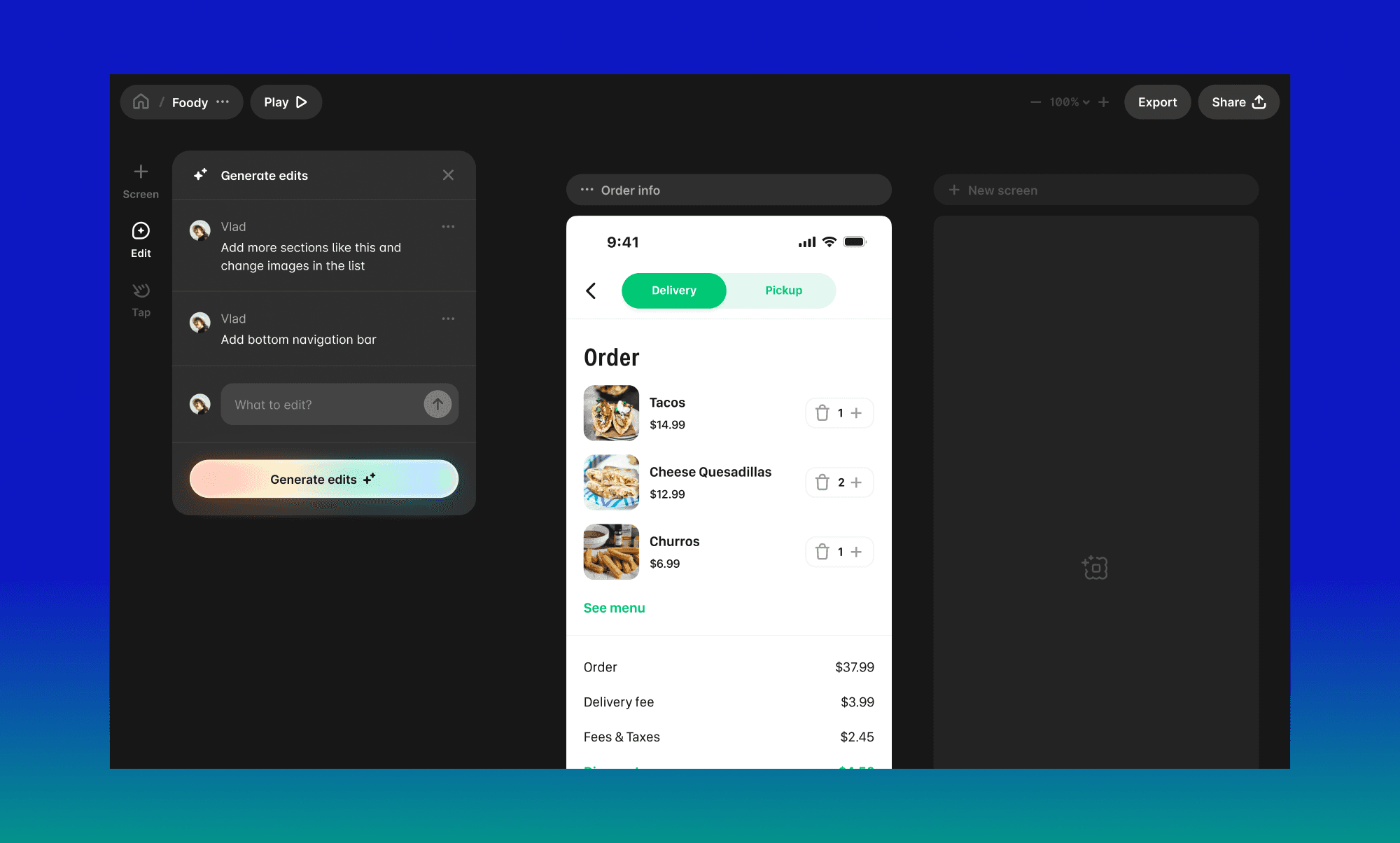Figma Make Overview
Similar to v0 or Lovable, Make uses large language models (like Claude) to generate code from prompts and designs. You describe what you want, and it writes the code.
You can use it to test ideas, explore components, or prototype layouts, without writing code from scratch. It’s designed to work with both text inputs and visual context from your Figma files or images.

You can add a visual reference like a screenshot or a Figma frame to make the output more accurate.
It takes just a few seconds to go from idea to code. You get a live preview, and you can keep tweaking the prompt or rerunning it with different models.
Figma Make Features
1. Write prompts, get code
Start with a plain English description. Figma Make understands structure, styling, and layout logic.
2. Attach visuals
Drag in PNG, JPG, or SVG files, or connect your Figma file. These are used as visual context to guide the generation.
3. Choose your model
Pick between available models (e.g. GPT-4 or Claude). Each behaves differently in how it generates and structures code.
4. See interactive preview
Once generated, the code is shown and rendered live in the playground. You don’t need to set up anything locally.

Figma Make Use-cases
Figma Make sits in a unique spot between design and engineering. It’s a lightweight way to go from an idea to a testable UI snippet. This makes it useful for:
Designers who want to explore interactive components
Engineers prototyping without setting up full stacks
Product teams sketching out features for user testing
Anyone trying to bridge the gap between Figma and front-end code
Figma Make Access
Right now Figma Make is in open beta, and they rolling it out to individuals with Full seats on all paid plans. So to get a chance to use it you first need to start a paid plan.
Figma Make Alternatives
Banani
Banani is a great alternative if you're focused on the design and prototyping stage. It allows generates interactive UI prototypes from simple text prompts and helps you quickly prototype multi-screen designs.

Bolt.new
Bolt.new by StackBlitz is a promising AI tool that speeds up the full-stack development. Its extensive framework support, and one-click deployment, opens new possibilities for web devs
v0
v0 generates copy-and-paste friendly React code based on shadcn/ui from a simple text prompts. Developers can create user interfaces with minimal effort. It allows everyone to focus more on refining the design rather than building it from scratch.
Conclusion
As design and development keep moving closer together, tools like Figma Make are helping teams move faster and collaborate better. If you're already in the Figma ecosystem and exploring AI design and dev tools, it's worth trying.




